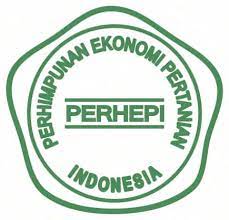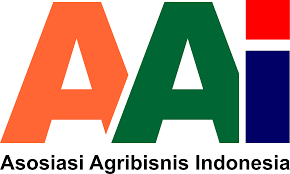Dampak Kebijakan terhadap Penawaran dan Permintaan Cengkeh Indonesia di Pasar Dunia
Abstract
Clove is a spice plant that plays an important role in Indonesia's economic growth. This study aims to analyze the impact of government policies on demand and supply of Indonesian cloves in the world market. This study uses an econometric approach by building a linear equation model. Data analysis was performed using the Two-Stage Least Square (2SLS) method using the SAS analysis tool version 9.0. The study uses time series data for the period 1985–2019. The increase in the real price of Indonesian cloves, the combination of the increase in the real price of Indonesian cloves with the depreciation of the real exchange rate, the combination of the increase in the real price of Indonesian cloves with the harvested area have an impact on increasing supply, exports, and imports of Indonesian cloves and has an impact on decreasing demand for Indonesian cloves and the real world price of cloves. Real exchange rate depreciation has an impact on increasing exports and increasing imports of Indonesian cloves and has an impact on decreasing demand and supply of Indonesian cloves, decreasing real prices of Indonesian cloves and real world prices of cloves. The increase in harvested area has an impact on increasing supply and demand for Indonesian cloves and on decreasing the real price of Indonesian cloves.
Downloads
References
[2] D. Marihandono and B. Kanumoyoso, Rempah, Jalur Rempah, dan Dinamika Masyarakat Nusantara. Jakarta: Kementerian Pendidikan dan Kebudayaan, 2016.
[3] A. Wahyudi, “Strategi Stabilisasi Kinerja Pasar Cengkeh Nasional,” Perspektif, vol. 15, no. 1, pp. 73–86, 2016, doi: http://dx.doi.org/10.21082/psp.v15n1.2016.73-85.
[4] Direktorat Jenderal Perkebunan, Cengkeh Statistik Perkebunan Indonesia 2018-2020. Jakarta, 2019.
[5] Fatmah, M. Antara, and S. Darman, “Faktor-Faktor yang Mempengaruhi Produksi dan Pendapatan Usahatani Cengkeh (Studi Kasus di Kecamatan Ogodeide Kabupaten Tolitoli ) Factors Influencing Clove Farming Production and Income (Case Study at Ogodeide District Tolitoli Regency ),” Agroland, vol. 22, no. 3, pp. 216–225, 2015.
[6] A. Suprihanti, B. M. Sinaga, H. Harianto, and R. Kustiari, “The Impact of Clove Import Policy on Clove Market and Cigarette Production in Indonesia,” in The Impact of Clove Import Policy on Clove Market and Cigarette Production in Indonesia, 2018, vol. 172, no., pp. 274–279. doi: 10.2991/fanres-18.2018.55.
[7] C. Dewi, Achsanulnashir, and Widiyono, “Analisis Daya Saing Ekspor Cengkeh Indonesia di Pasar Internasional,” J. Adm. bisnis, vol. 1, no. 1, pp. 25–31, 2021.
[8] A. Suprihanti, N. Harianto, B. M. Sinaga, and R. Kustiari, “Dampak Kebijakan Cukai Rokok terhadap Distribusi Surplus Ekonomi Industri Rokok di Indonesia,” J. Agro Ekon., vol. 37, no. 1, p. 1, 2019, doi: 10.21082/jae.v37n1.2019.1-23.
[9] Darmawan, Irmayani, and Yusriadi, “Analisis Agribisnis Usahatani Cengkeh ( Zysygium Aromaticum. L ) di Desa Komba Kecamatan Larompong Kabupaten Luwu,” J. Ilm. Agrotani, vol. 1, no. 1, pp. 28–36, 2019, [Online]. Available: http://ojs.lppmuniprima.org/index.php/agrotani
[10] F. N. Sari, A. Bafadal, and W. O. Yusria, “Faktor-Faktor Produksi yang Berpengaruh dalam Usahatani,” J. Ilm. Agribisnis, vol. 2, no. 1, pp. 6–12, 2017.
[11] A. B. Santoso, “Upaya Mempertahankan Eksistensi Cengkeh di Provinsi Maluku Melalui Rehabilitasi dan Peningkatan Produktivitas,” Litbang Pertanan, vol. 37, no. 1, pp. 26–32, 2018, doi: 10.21082/jp3.v37n1.2018.p26-32.
[12] D. Septiadi, Harianto, and Suharno, “Dampak Kebijakan Harga Beras dan Luas Areal Irigasi Terhadap Pengentasan Kemiskinan Di Indonesia,” J. Agribisnis Indones., vol. 4, no. 2, pp. 91–106, 2016.
[13] D. Julia, A. Asmara, and Heriyanto, “Dampak Kebijakan Fiska Terhadap Kinerja Sektor Petanian di Provinsi Riau,” J. Din. Pertan., vol. XXX, no. 3, pp. 233–248, 2015.
[14] Nurjalilah, D. Bakce, and R. Yulida, “Analisis Dampak Perubahan Kebijakan Pemerintah Terhadap Ekonomi Rumahtangga Petani Sayuran Di Kota Pekanbaru,” Indones. J. Agric. Econ., vol. 11, no. 1, pp. 46–60, 2020.
[15] V. Lisna, B. M. Sinaga, M. Firdaus, and S. Sutomo, “Impacts of Tax Revenue Sharing and Government Expenditure Improvements in the Real Sector on Agricultural Poverty Reduction in Indonesia,” J. Agro Ekon., vol. 32, no. 1, pp. 13–34, 2014.
[16] S. Widayanti, S. . Kiptiyah, and M. I. Semaoen, “Analisis Ekspor Kopi Indonesia,” Wacana, vol. 12, no. 1, pp. 192–203, 2009.
[17] I. Hermawan and L. Adam, “Analisis Faktor-Faktor yang Mempengaruhi Penawaran dan Permintaan Serat Kapas di Indonesia,” J. Ekon. Kebijak. Publik, vol. 1, no. 1, pp. 101–128, 2010.
[18] Y. M. Tupamahu, “Analisis Daya Saing Ekspor Cengkeh Indonesia di Kawasan ASEAN dan Dunia,” Agrikan J. Agribisnis Perikan., vol. 8, no. 1, p. 27, 2015, doi: 10.29239/j.agrikan.8.1.27-35.
[19] H. D. Purnomowati, D. H. Darwanto, S. Widodo, and S. Hartono, “Analisis Permintaan Karet Alam Indonesia di Pasar Internasional,” Agrar. J. Agribus. Rural Dev. Res., vol. 1, no. 2, pp. 136–148, 2015, doi: 10.18196/agr.1217.
[20] A. Sinclair, D. Bakce, and J. Yusri, “Indonesian Journal of Agricultural Economics ( IJAE ),” Indones. J. Agric., vol. 8, no. 2, pp. 144–155, 2017.
[21] T. S. Napitupulu, D. Bakce, A. Syahza, B. Asmit, and S. Hadi, “Model Penawaran dan Permintaan Minyak Kelapa Sawit Indonesia di Pasar Internasional Supply and Demand Model of Indonesian Palm Oil in the International Market,” J. Din. Pertan. Ed. Khusus, vol. 2019, no. 3, pp. 119–128, 2019.
[22] T. Ashari, B. Setiawan, and S. Syafrial, “Analisis Simulasi Kebijakan Peningkatan Ekspor Manggis Indonesia,” Habitat, vol. 26, no. 1, pp. 61–70, 2015, doi: 10.21776/ub.habitat.2015.026.1.8.
[23] L. Sugiyono, “Dampak Kebijakan Harga Gabah dalam Meningkatkan Produksi Padi Indonesia,” J. Apl. Stat. Komputasi Stat., vol. 9, no. 2, pp. 53–66, 2017, [Online]. Available: https://jurnal.stis.ac.id/index.php/jurnalasks/article/view/145
[24] V. B. Sebayang, B. M. Sinaga, Harianto, and I. K. Kariyasa, “Dampak Kebijakan Domestik Terhadap Ketersediaan Jagung Untuk Bahan Baku Industri Pengolahan Di Indonesia,” J. Agro Ekon., vol. 37, no. 2, pp. 141–155, 2019.
[25] A. Koutsoyiannis, Theory of Econom- etrics. New York, 1977.
[26] D. N. Gujarati, Dasar-Dasar Ekonometrika Edisi Kelima. Mangunsong, R. C. penerjemah. Jakarta: Salemba Empat, 2013.
[27] S. Sukirno, Makro Ekonomi Teori Pengantar Edisi Ketiga. Jakarta: Rajawali Pers, 2011.
Copyright (c) 2023 Jurnal Agribisnis

This work is licensed under a Creative Commons Attribution 4.0 International License.






















